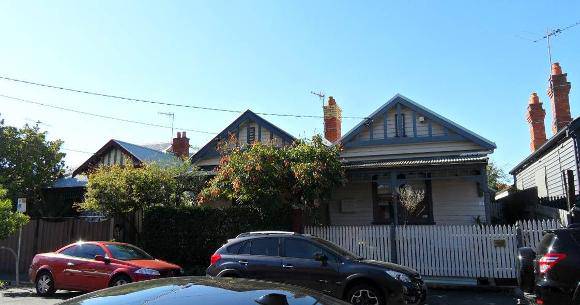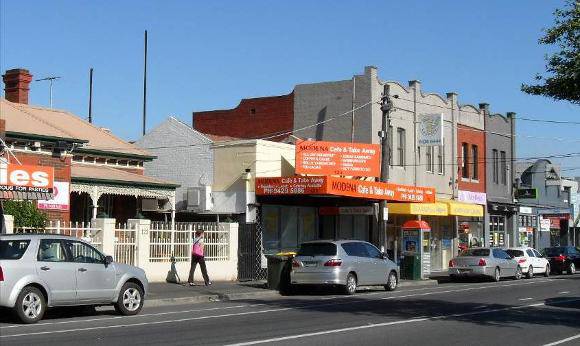| Back to search results » | Back to search page » |
|
Yarraberg Precinct
LocationAppleton Street and Blazey Street and Burnley Street and Crown Street RICHMOND, YARRA CITY LevelRecommended for Heritage Overlay |
|
Statement of Significance
What is significant? The current housing stock is primarily Victorian-era and Edwardian-era houses and shops, with a number of well preserved examples from the immediate post First-War era. Many of them are small cottages that housed workers who found employment in the nearby industrial areas, including David Mitchell's 'Doonside' industrial estate just to the north. Contributory buildings have typically: - Pitched gabled (mainly Edwardian-era) or hipped (mainly Victorian-era) roofs; Contributory elements also include: - Small front gardens, bordered by low front fences, typically of timber picket. The following buildings are of individual significance to the precinct: 2-6 & 24 Appleton Street, 97-105 Burnley Street, and HO248 - 9-17 Crown Street. How it is significant? Why it is significant? Yarraberg Precinct provides a good representation of working class housing of the Victorian era, most of them small-scale and constructed of timber with detailing standard to their era. To a lesser extent, it represents Edwardian housing, much of it in the form of duplexes with prominent and decorative front gables, and timber California Bungalows of the interwar era. The commercial development on Burnley Street is also representative of these three eras. These three development eras correspond to the main growth periods seen across Richmond. (Criterion D) A number of the Edwardian-era houses display unusual and attractive details, including the Tudor-style details of the duplexes at the corner of Appleton and Burnley streets (Individually Significant), and the Edwardian brick duplexes on Crown Street and those on Blazey Street with very distinctive bi-chrome brick chimneys. (Criterion E)
Yarraberg Precinct, comprising 2-38 Appleton Street, 13-31 Blazey Street, 97-133 Burnley Street, and 9-39 & 12-30 Crown Street, is significant. The Township of Yarraberg was laid out in the early 1850s by investor William Francis Splatt, on the banks of the Yarra River near a crossing to Hawthorn. Sales of land along North, Crown, River and Bridge (now Blazey) streets began in 1853. Pre-1855 house construction was concentrated near the river, but this has been replaced by 20th-century industrial development.
- One storey wall heights;
- Weatherboard, some brick or stucco walls;
- Corrugated iron, with some slate roofing;
- Chimneys of either stucco finish (with moulded caps) or of matching face brickwork with corbelled capping courses;
- Post-supported verandah elements facing the street; and
- Less than 40% of the street wall face comprised with openings such as windows and doors.
- Public infrastructure, expressive of the Victorian and Edwardian-eras such as stone pitched lane paving, kerbs and channels, and asphalt paved footpaths.
The Yarraberg Precinct is of local aesthetic and historical significance to the City of Yarra.
The precinct is of historical significance as a tangible illustration of Yarraberg, one of the first group of residential estates in the City, set in place by the 1850s at a crossing of the Yarra River as distinct from those early Richmond residential areas that grew because of proximity to Melbourne Town. During the 19th century the Yarraberg settlement was always known as a separate entity to the rest of the Richmond Municipality, and this identity was still strong during the interwar period. As it was located next to the early Richmond industrial centre, its development included small cottages to house workers, who found employment nearby, as well as shops on Burnley Street to serve the locals. (Criterion A)
Group
Residential buildings (private)
Category
Residential Precinct





